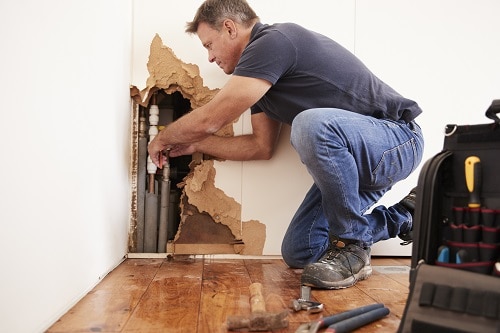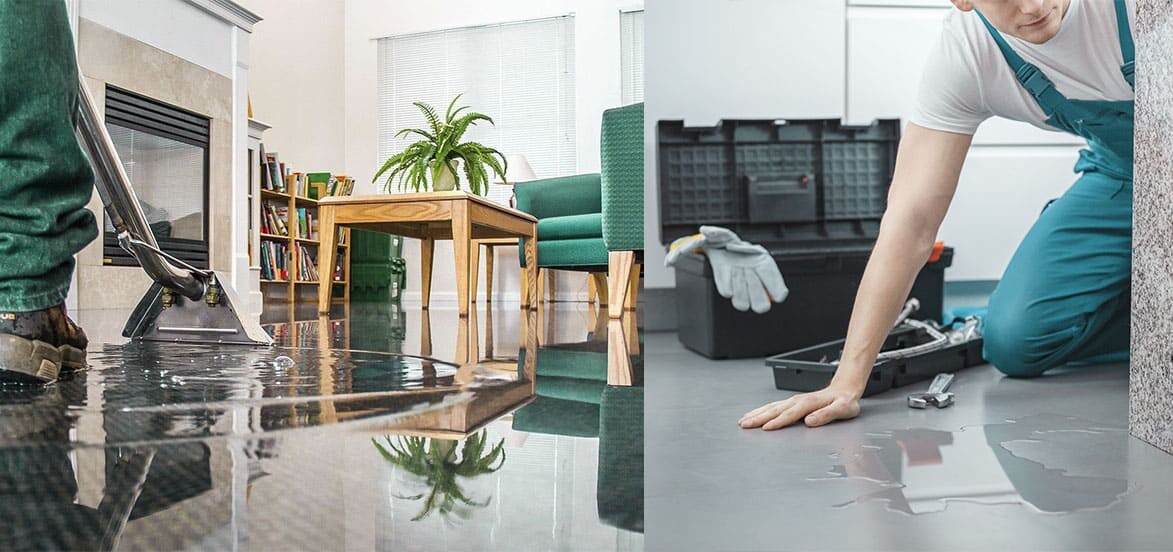Top Tips for Effective Water Damage Restoration: Protect Your Building Today
Water damage can strike all of a sudden, creating significant disturbance and possible threats. Efficient restoration calls for a systematic strategy to minimize further harm. From assessing the damage to executing preventive measures, each step plays a crucial role in safeguarding property. Understanding these methods can make all the difference in the results of a water-related crisis. What vital actions should be focused on to ensure thorough protection?
Assess the Damage Immediately
When a water damage event happens, it is vital to analyze the damage instantly to minimize further problems. This first examination helps establish the extent of the damage and determines influenced locations. Water can seep right into wall surfaces, floors, and furniture, causing mold development and architectural instability if not resolved immediately. A detailed evaluation must include checking for discoloration, moisture, and musty odors, which show moisture existence. It is likewise important to record the damage via photographs and notes for insurance coverage objectives. Involving specialists for a more thorough analysis might be essential, specifically when dealing with hidden or substantial damage. Flood Cleanup Services. Early recognition and precise analysis lay the structure for reliable restoration and protect the residential property from added difficulties
Shut down the Water Supply
Shutting off the water system is an essential action in avoiding more damage during a water-related event. When a leakage or flood occurs, immediate activity is crucial to reduce the extent of the damage. Locating the main water shut-off valve must be a top priority. This shutoff is often located near the water meter or where the water line gets in the building. Once located, transforming the shutoff clockwise will certainly stop the circulation of water. In situations where the major valve is unattainable, individual shut-off shutoffs for devices might likewise be made use of. Quickly shutting down the water supply not just protects the residential or commercial property from additional damage but additionally facilitates the succeeding restoration procedure, making sure that healing initiatives can begin without hold-up.
Eliminate Excess Water Quickly

Eliminating excess water quickly is important for lessening damage and preventing mold development in affected locations. The longer water continues to be touching materials such as insulation, drywall, and timber, the greater the danger of structural damage and the advancement of mold and mildew. Mold Remediation After Water Damage. Property owners should act swiftly to examine the situation and use appropriate tools, such as wet vacuums or pumps, to draw out standing water successfully. If the volume of water is considerable, contacting professional restoration services might be essential, as they can offer customized equipment and knowledge. In addition, eliminating furniture and items from the affected area can aid to minimize damage and facilitate the overall restoration process. Timely activity not only shields building yet additionally aids in a smoother healing journey
Dry Out the Affected Area
After removing excess water, it is important to dry the afflicted area thoroughly. This involves getting rid of any standing water and improving air circulation to help with evaporation. Efficient drying out will certainly help prevent mold and mildew development and more damage.

Eliminate Standing Water
Quickly addressing standing water is important for efficient water damage restoration. The existence of stagnant water can result in more residential or commercial property damage and create an atmosphere favorable to mold growth. To alleviate these risks, it is vital to remove standing water as quickly as feasible. This process usually entails making use of submersible pumps, wet vacuums, or specialized removal equipment. Professionals recommend reviewing the deepness and level of the water prior to picking the appropriate method for removal. Safety and security safety measures ought to also be taken, consisting of using protective gear and ensuring electrical power is turned off in influenced areas. Once the standing water is effectively gotten rid of, the drying process can begin, even more safeguarding the residential property from continuous damage.
Increase Air Circulation
Enhancing air circulation is vital for successfully drying out areas influenced by water damage. This process helps to expedite dissipation, decreasing the threat of mold and mildew growth. Specialists typically advise making use of fans to produce a constant airflow throughout the area. Putting box followers in home windows can pull in fresh air, while high-velocity followers can route air flow towards moist surfaces. Flood Cleanup Services. Additionally, opening up windows and doors enables cross-ventilation, enhancing the drying process. Dehumidifiers can likewise be used to remove excess dampness from the air, further aiding in drying. By making sure that air distributes openly, homeowner can considerably reduce the long-term impacts of water damage and secure the honesty of their framework
Inspect for Mold Growth
Mold growth is a major worry adhering to water damage, as it can cause health and wellness problems and architectural wear and tear. After any type of flooding or leaks, it is vital to carry out a thorough evaluation of the affected locations. This includes monitoring surprise rooms such as behind walls, under carpets, and in attic rooms or basements where dampness might remain. Indications of mold and mildew consist of a mildewy smell, staining on surfaces, or noticeable growth. Building owners should make use of protective gear when evaluating, as mold spores can present health and wellness risks. If mold and mildew is detected, it is crucial to resolve it promptly, as postponing remediation can aggravate the issue and increase the risk of significant health and wellness concerns for passengers. Early intervention is key to reliable mold monitoring.

Fixing and Restore Broken Frameworks
When dealing with water damage, it is important to initial examine the structural honesty of the affected locations. This analysis helps identify possible hazards and notifies the necessary repair service approaches. Engaging expert restoration services guarantees that the restoration procedure is performed securely and efficiently.
Examine Structural Honesty First
Before initiating any water damage restoration, it is vital to assess the architectural honesty of the affected location. This evaluation assists recognize any kind of compromised elements, such as wall surfaces, foundations, or light beams, which may pose safety and security threats - Mold Remediation After Water Damage. Inspecting for indications of bending, fracturing, or mold and mildew growth is crucial, as these signs can reveal underlying damage that needs instant interest. In addition, recognizing the extent of the damage can lead restoration initiatives and establish whether fixings are practical or if substitute is needed. It is important to record searchings for extensively, as this info can be important for insurance policy cases or future referral. Focusing on architectural analysis assurances that restoration initiatives continue securely and effectively, ultimately securing the building and its occupants
Use Expert Restoration Services
Utilizing expert restoration services pop over to these guys is essential for successfully repairing and recovering broken frameworks after water events. These experts have the required training, devices, and experience to examine and alleviate water damage thoroughly. They can identify covert issues, such as mold and mildew growth and structural weaknesses, that might not be promptly obvious. Professional services likewise utilize sophisticated drying techniques and devices, making certain that all dampness is gotten rid of to stop further damage. Furthermore, they stick to market requirements and laws, guaranteeing that the restoration process is effective and risk-free. By engaging restoration professionals, homeowner can quicken healing, minimize long-term damage, and inevitably secure their financial investment. This proactive technique is crucial in maintaining the honesty and security of affected structures.
Prevent Future Water Damage
To properly stop future water damage, house owners should take on a positive approach to upkeep and repairs. Regular assessment of downspouts, rain gutters, and roofs is important; clogged rain gutters can cause water overflow and roof covering leakages. Furthermore, examining for leakages in pipes components and home appliances can thwart prospective damage. Home owners should additionally consider setting up sump pumps in cellars or low-lying areas to manage water accumulation. Securing cracks in structures and ensuring appropriate water drainage around the property are crucial action in safeguarding against water invasion. Moreover, keeping moisture degrees with dehumidifiers can protect against mold and mildew development. By implementing these precautionary procedures, home owners can greatly decrease the danger of water damage and secure their residential or commercial property for the lengthy term.
When a water damage event takes place, it is essential to examine the damage quickly to mitigate further concerns (Water Damage Restoration). Getting rid of excess water promptly is essential for reducing damage and stopping mold growth in impacted areas. Promptly resolving standing water is important for effective water damage restoration. The presence of stationary water can lead to more home damage and produce an environment conducive to mold growth. Before initiating any kind of water damage restoration, it is essential to analyze the architectural honesty of the damaged area